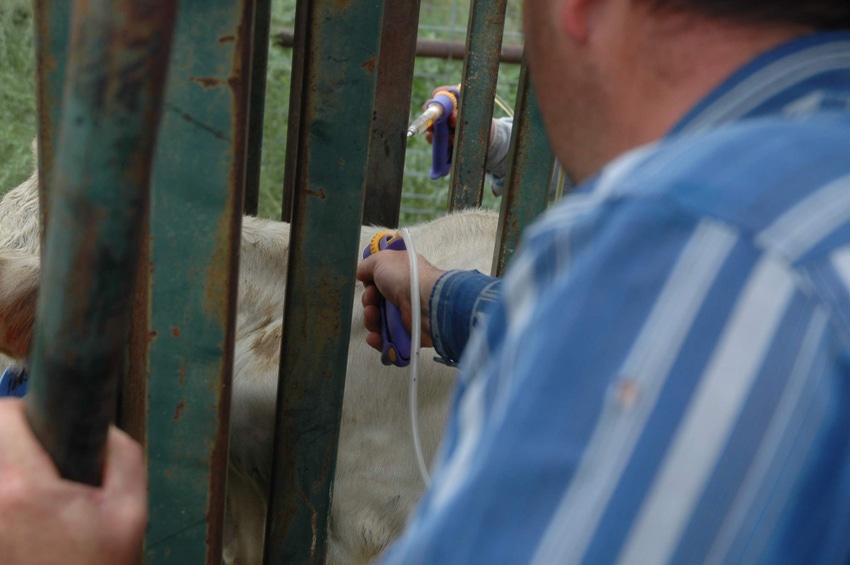A Stockmanship and Stewardship program was a gold mine of practical tips.

Have you ever videoed yourself working cattle? Ron Gill says it can be instructive—humbling, but instructive.
That’s one of the many, many golden tidbits that around 100 people took away from a recent Stockmanship and Stewardship program at Colorado State University. It was one of several held around the country. Gill, a longtime Extension beef specialist with Texas A&M University, teamed with Curt Pate, a Montana rancher and cattle handling expert, and Dean Fish, who ranches on Arizona’s border with Mexico, to give a cattle handling demonstration.
“I do a lot of videos working cattle and when I go back and look at them, it’s amazing how many times I’m in the wrong spot,” he said. “So if you really want to try to get better at it, video what’s going on.”
That’s important, he says, because if the cattle aren’t doing what you want them to do, don’t get fussy with the cattle. “Figure out what you're doing that's not making it work. It's not the cattle that are going to change. They are what they are. We’ve got to change what we do.”
READ: Yes, there's a premium for BQA-certified cattle
And that was the focus of the nearly 2 hours the trio spent showing the assembled beef producers low-stress cattle handling techniques in a variety of situations.
1 and 2—Beyond making a conscious decision to get better at working cattle, which is the first step, Gill talked about “drawing an eye” when working cattle.
“If you put pressure on [cattle] or walk toward them, a lot of times they’ll circle you. That’s because as they walk off, you get out of focus and they’ll turn their heads to see where you’re at and that turns their direction.”
People used to call it pushing on a hip. “Well, they don't have any sensory organs on the hips. So we're actually pulling an eye around when we do that or we have to get repositioned to push an eye to get them to turn the other way. So working with that eye is a big deal.”
READ: Temple's cattle handling tips
3—Getting the flow started. “Flow is a big part of everything we do. And so if we can get the front of the cattle started, the rest of them are going to go pretty easy,” he said.
“And so most of what we talk about in pulling pens or even sorting cattle in an alleyway is to create a really good flow. And then not doing anything to mess it up, but just build cattle into that flow. And so rather than trying to push cattle out, if we will start the front, we can draw cattle out of feedlot pens or any kind of pen.”
READ: Communication is key in low-stress cattle handling
4—Always be at the gate if you possibly can, where you can count the cattle out and get that draw and flow started out. “The same thing works coming through processing area, creating that draw and flow through the sweep system and entering the crowd alley.”
That also carries over into loading trailers. “Any part of what we're doing all ties together. So the way we train them in the pens dictates how they work in the alleyways. That dictates how they work in the sweep, the load up, the chute. And so if we communicate the same way every time, they get to where it’s much easier on them to figure out what we're asking them to do.”
5—Cattle want to remove pressure. “So if we put pressure on them, they're going to try to respond to that and take that pressure off. The wilder cattle are, the less pressure it takes to get that response. Sometimes the gentle cattle, you have to put more pressure on them to get them to respond. But it's all about pressure and release.”
It's no different than training any other animal to do what you want them to do, he said.
“And it's interesting to me that those of us in the livestock industry, we like to train dogs. We like to train horses. But for some reason we don't like training cattle and we don't really don’t like training people. And all of those are necessary if we're going to get them to perform like we want them to do. We don't expect the horse first time we catch it to know what we want it to do. So we'll spend months training one of them to do what we want them to do,” he said.
“But we expect the cow to know as soon as we walk up what we're expecting. So everything we do can make a cow better or worse. And so it's our job to make sure every interaction is one where you can improve the handling and management of those cattle and make it work a little better.”
About the Author(s)
You May Also Like



